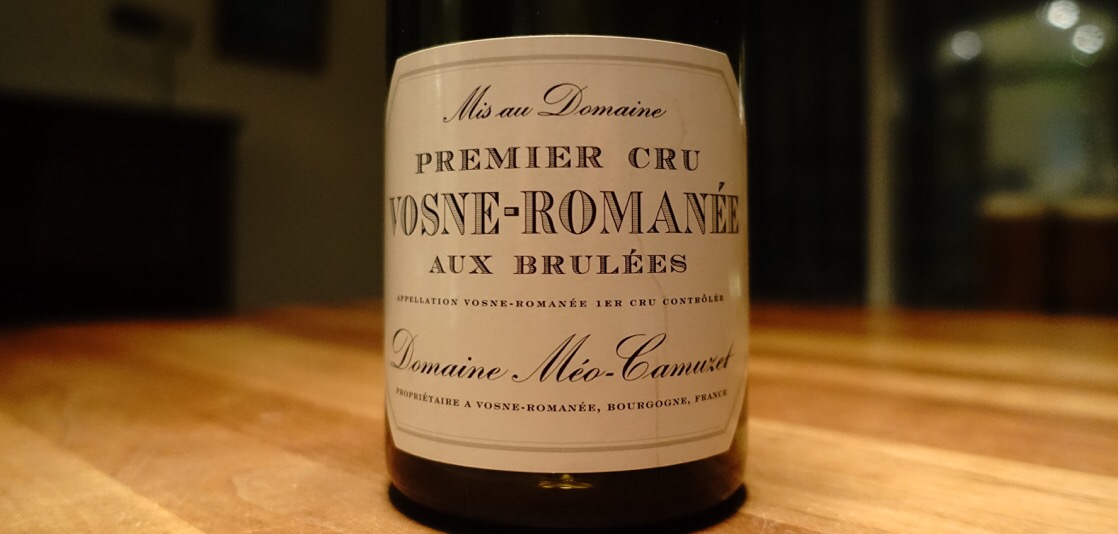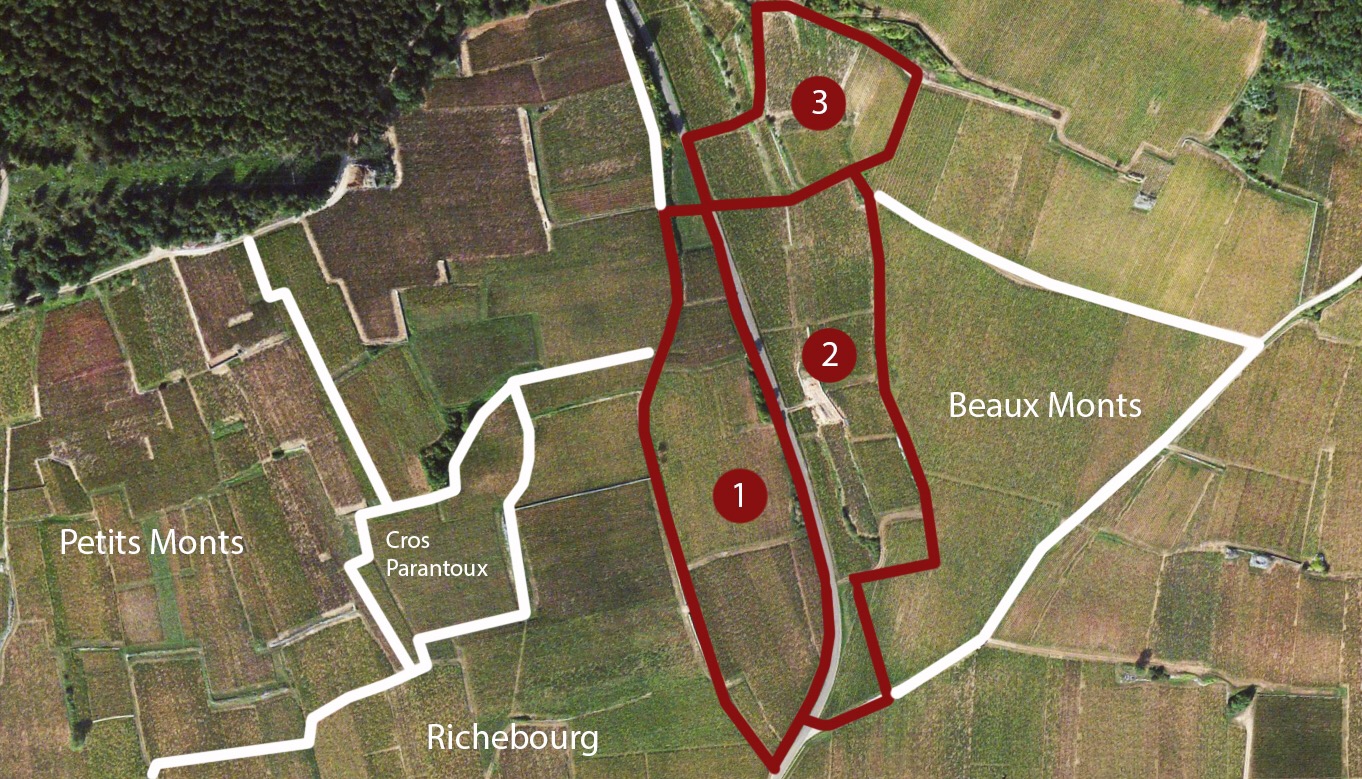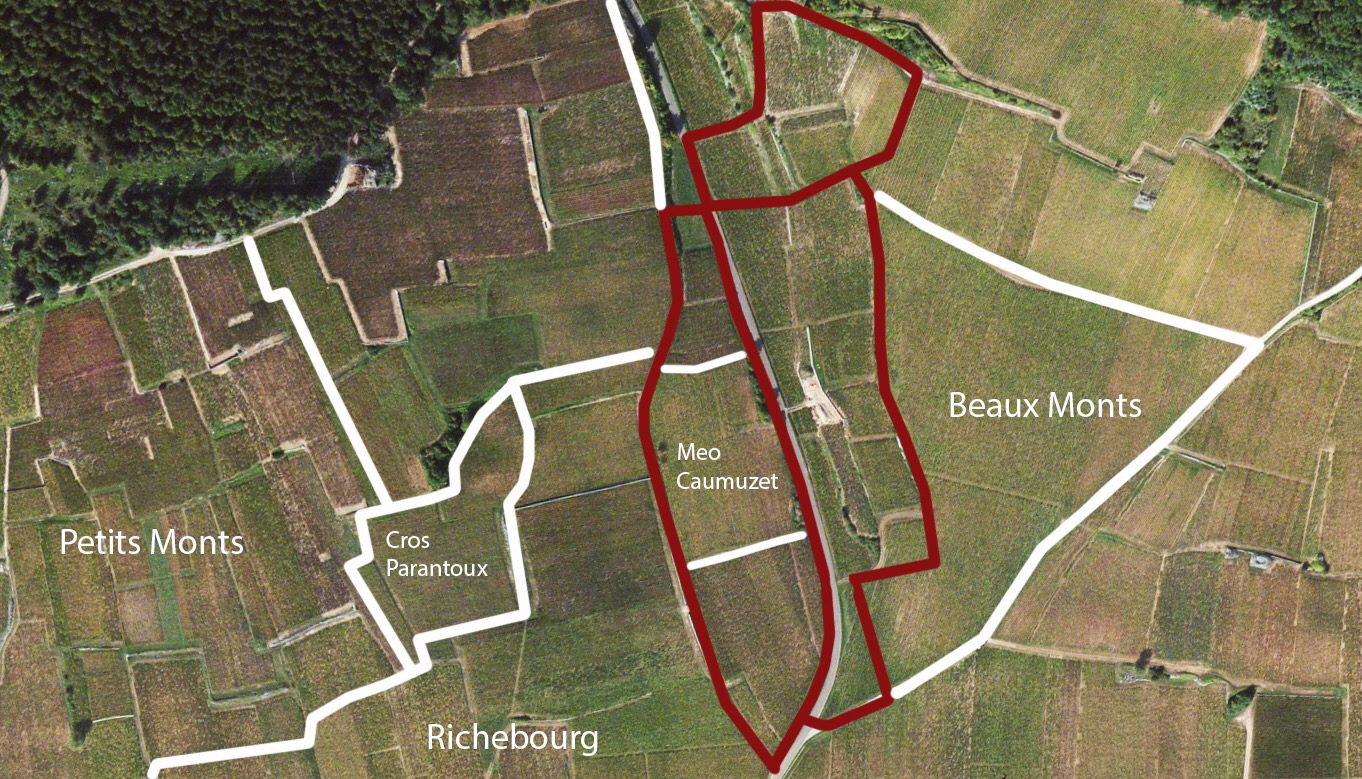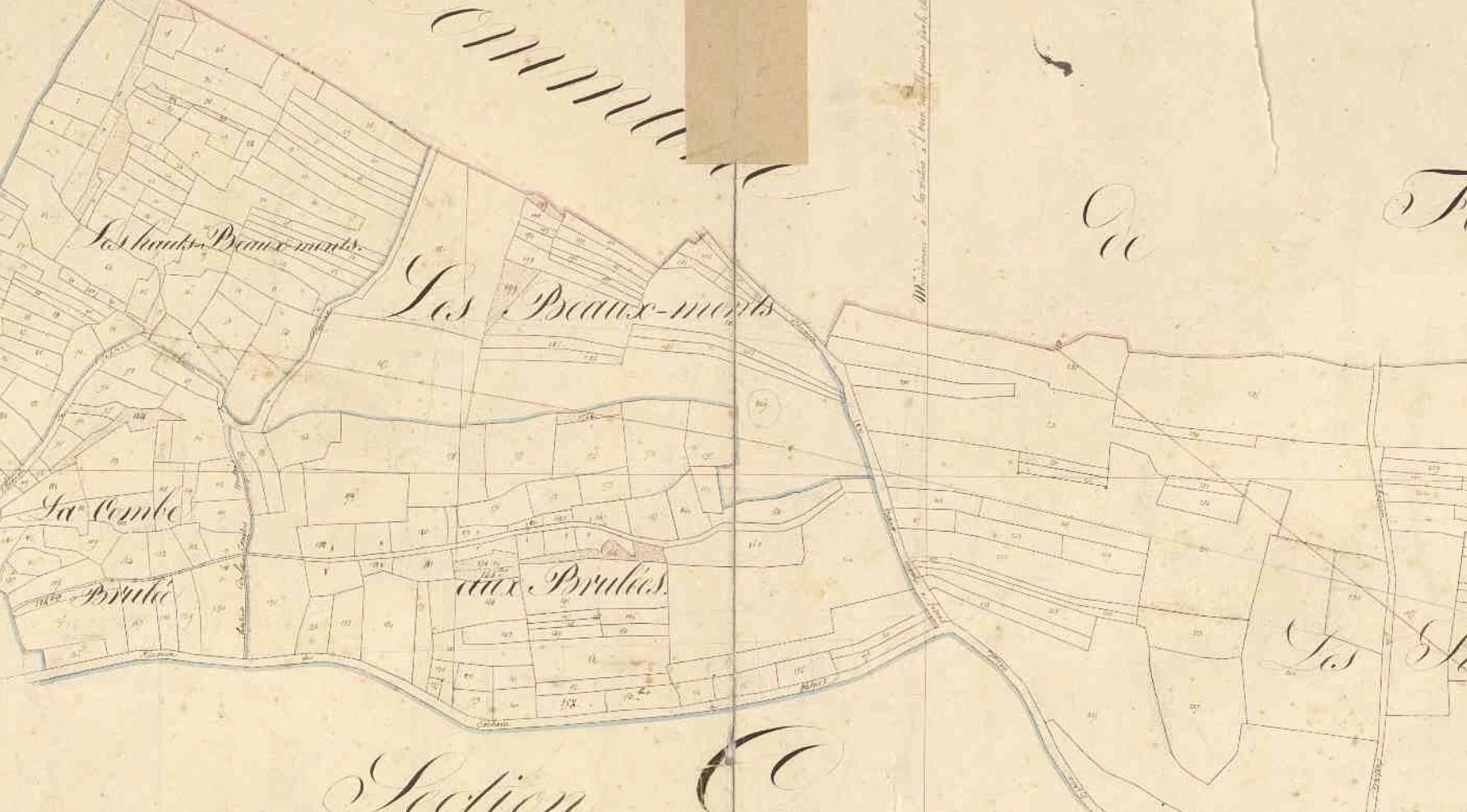The Vosne-Romanee Aux Brulées is one of my favorite wines form Domaine Meo-Camuzet. I recently tasted the 2007 and it was still youthful but just so delicate, defined and delisious …
So this inspired me to take a closer look at Aux Brulées starting with the Meo-Camuzet plots.
So let’s go to the northern end of Vosne-Romanee.
Brulees – three vineyards in one
Vosne-Romanee Aux Brulées and the 1er cru part of Vosne-Romanee La Combe Brulée is often considered as one vineyard, as very few wines are labelled La Combe Brulée.
But in fact there are three sections – the southern section of Aux Brulées (1), the northern sections of Aux Brulées (2), and the lastly the 1er cru section. of La Combe Brulées (3) – see map below.
The Meo Camuzet plot on Aux Brulées
The Meo-Camuzet plots on Aux Brulées is located just north of his main plots of Richebourg – or more precisely Les Veroilles ou Richebourg.
The plots include in total 0.73 ha of vineyard according to most sources although the cadastre map indicate that the total area of the plots is slightly higher.
The plots can be seen on the map below, and they are located on a northern faced slope going from Les Verroilles sous Richebourg and down to the road towards Corboin.
The photo below show the Meo-Camuzet plot seen from the road – D109.
The history of the Meo-Camuzet plots
The Meo-Camuzet ownership dates back to at least 1882, as Camuzet is mentioned as an owner of Aux Brulées by Danguy & Aubertin (1882)2 and also by Rodier (1920)3.
It’s however not clear if Camuzet owned the current plots back in 1882. Looking at the old cadastre maps from 1827 the area owned by Meo-Camuzet was divided into numerous small plots when the cadastre was made – indicating that there were many owners at that time.
Most of the Camuzet holdings were acquired by Etienne Camuzet from approximately 1880 and during the following decades a large portfolio of top vineyards were bought to create a very impressive Domaine – that included Chateau Clos de Vougeot (acquired in 1920) and a large part of the Clos de Vougeot vineyard.
So presumably the Meo-Camuzet’s ownership of Aux Brulées dates back to around 1880.
All the vineyard work was done by tenant farmers, and this continued when Etienne Camuzet passed away in 1946.
The Henri Jayer era on Aux Brulees
Etienne Camuzet left the estate to his daughter Mme. Maria Noirot-Camuzet, who continued the tradition with tenant farmers. One of those were Henri Jayer a young man from Vosne-Romanee.
Henri Jayer began to make wines just after the second world war. The family had quite some vineyards scattered around Vosne, and just after the war he took over the management of some of the vineyards of Mme. Noirot-Camuzet. He entered into a series of metayage agreements – presumably just after the war – it is however not clear when Jayer took over the plots on Aux Brulées.
Mme. Noirot-Camuzet passed away in 1959 and the estate was passed on to her nephew Jean Meo, the father of Jean-Nicolas Meo the current owner and manager of Domaine Meo-Camuzet.
The metayage agreement between Henri Jayer and the Noirot-Camuzet/Meo family was prolonged several times, and it ended in 1987 – when the last vineyards were returned to Domaine Meo-Camuzet – including Aux Brulées.
The last vintage of Henri Jayer Aux Brulées was 1987 as the arrangement with Meo Camuzet was terminated at that point, and Domaine Meo-Camuzet began to produce and bottle the wines themselves.
In the vintages 1985 and 1986 a part of the production was presumably sold under the Meo-Camuzet label. Henri Jayer stayed on as a consultant for Meo-Camuzet in the following years … but his influence seems to have faded in the very early 1990s.
The wines from the Meo-Camuzet plots on Aux Brulées
As mentioned above Henri Jayer presumably produced wines from the Meo-Camuzet plots from after the war until 1987.
These bottles were either sold under the Henry Jayer labels, or sold to negociants/importers and labelled by them – one was Caves Dessilly, a well known bottling, who used a label that looked very much like the “classic Jayer label”. Alexis Lichine also sold Jayer wines, and he used another label for the wines he sold.
It should be noted that Jayer used another label in the 1960s for the domaine bottled wines – a label that bears little resembleance to the “classic” Jayer label and the label used by Caves Dessilly.
To complicate matters Jayer delivered some of the wines to the Meo family, who labelled these with the old estate brand – Domaine Camuzet. These were presumably not sold commercially but consumed by the family and given as gifts to friends of the family.

Photo of the Domaine Camuzet label – thanks to Robert Collins
Domaine Meo-Camuzet was established in 1981 according to the domaine website, and the first vintage sold under this label 1983.
Domaine Meo-Camuzet Vosne-Romanee Aux Brulées – the wine
The Vosne-Romanee Aux Brulées is one of my favorite wines from the Meo-Camuzet estate. It’s both a rich and refined wine .. generous, and at times both airy and velvet. It has a lovely inter-play between red and dark fruits both in the bouquet and on the palate.
The bouquet is often very spicy with a lovely collection of Vosne spices that gives the otherwise fruity nose a lovely floral complexity.
Directly compared to the Cros Parantoux it seems to lack the definition, focus, and ultimate purity of the magnificent Cros Parantoux. That being said .. I love the Aux Brulées for what it is … a both beautiful and generous Vosne 1er cru from the top shelf quality wise.
It’s in my view often better than the Clos de Vougeot and the Echezeaux from Meo-Camuzet, although they have the benefit of a grand cru terroir.
References & Sources:
- Jules Lavalle, Histoire et Statistique de la Vignes et Des Grands Vins de la Côte d’Or (1855)
- M.R. Danguy et M. Ch. Aubertin, Les Grands Vins de Bourgogne (1892)
- Camille Rodier, Le Vin de Bourgogne (1920)
- Clive Coates, Cote D’Or (1997)
- Clive Coates, The Wines of Burgundy (2008)
Sincere thanks to Ian Westcott for the editorial help on this article.
Latest tasting Notes for this producer
- Domaine Meo-Camuzet, Nuits-Saint-Georges Aux Boudots 2010 December 15, 2017
- Domaine Meo-Camuzet, Echezeaux 2013 June 11, 2017
- Domaine Meo-Camuzet, Clos de Vougeot 2008 June 10, 2017
- Domaine Meo-Camuzet, Vosne-Romanee Aux Brulee 2002 September 11, 2016
- Domaine Meo-Camuzet, Vosne-Romanee Aux Brulee 2007 February 20, 2016
- Domaine Meo-Camuzet, Clos de Vougeot 2008 August 22, 2015
- Domaine Meo-Camuzet, Vosne-Romanee Aux Brulees 2008 June 14, 2015
- Domaine Meo-Camuzet, Richebourg 2006 October 3, 2014
- Domaine Meo-Camuzet, Vosne-Romanee Aux Brulees 2003 September 27, 2013
- Domaine Meo-Camuzet, Vosne Les Chaumes 1996 August 29, 2013
Related articles
- Visit to Domaine Méo-Camuzet – Tasting the 2023sIt seems like Jean-Nicolas Méo is on a winning streak … and this is confirmed by the 2023s where all the usuals show very well … and some big surprises really hit the bullseye. Jean-Nicolas Méo’s wines followed the nature and style of the vintage, with a gentle, vivid hand – even the Cortons are lively ...
- Visit to Domaine Méo-Camuzet – Tasting the 2022sNo need to keep you in suspense: Domaine Méo-Camuzet did very well with its 2022s. Jean-Nicolas Méo’s wines followed the nature and style of the vintage, and he made the wines with a gentle, generous hand. Bravo! This is not the 2019 vintage that celebrates full-throttle wines like there’s no tomorrow. But 2022 has its moments of ...
- Visit to Domaine Méo-Camuzet – Tasting the 2021sThe 2021s come from a year of surprises, because the conditions for winemaking were definitely not good in Burgundy. First, there was the April frost, then hail in June, then rot and mildiou. There are not many positive things to mention regarding the growing season. But in the end, the good growers pulled through with hard work, ...
- The Clos Vougeot Tasting 2022During the Grand Jours de Bourgogne there is usually a Clos Vougeot tasting for the press; and so it was this year. It’s a good initiative, although some of the wines perhaps lacked the standard that one expects from a modern-day Clos Vougeot. The prices of grand cru Burgundy today somehow raise the consumer’s expectations ...
- Visit to Domaine Méo-Camuzet – tasting the 2020sThe 2020s are in many ways special wines, coming from a vintage with potent structure and intensity. Their balance is usually very fine, with the acidity giving lovely equilibrium to the wines’ generous constitution. This balance is often impeccable, and will help provide serious drinking for many years to come. Jean-Nicolas Méo 2018 (I forgot the photo ...






 - A true vin d’émotion – a Burgundy of passion
- A true vin d’émotion – a Burgundy of passion - A truly hedonistic wine – lively and enjoyable
- A truly hedonistic wine – lively and enjoyable - A vivacious wine for pure indulgance
- A vivacious wine for pure indulgance - A potential vin d´émotion - frais et léger
- A potential vin d´émotion - frais et léger